You will find large variety of snakes in India. Some snakes are venomous, but many non poisonous ones are harmless and helpful to nature.They help control pests like rats, insects and they usually avoid human contact. Many people fear snakes, but the truth is most of them are not harmful at all. In this article we will look into Top 10 Non-Poisonous Snakes Names in India 2025. These snakes are commonly found in forests, villages and even cities.
1. Indian Rock Python

The Indian Rock Python is one of the largest snakes in India. It can grow upto 10 to 15ft long. It is non poisonous and kills its prey by wrapping around it and squeezing tightly. This method is called constriction. These are found in forests, grasslands, and near water bodies. They mostly eat rats, birds and small animals. Though they may look scary due to their size are actually very calm and not harmful to humnas unless threatened.
2. Common Sand Boa
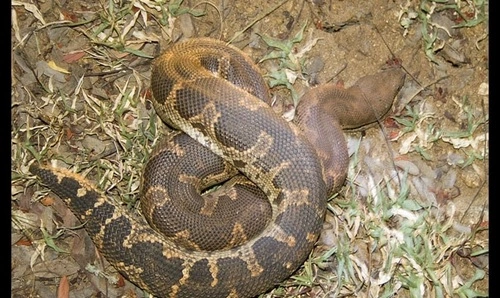
Common Sand Boa is a short, thick bodied snake that lives mostly under the soil. It is found in dry areas and desert regions of India. This snake moves slowly and feeds on rodents and small birds. It is very shy and hardly ever bites. Sadly many people belive false stories that this snake brings luck or has magical powers. For this reason some people do illegal tradings. But the truth is it is just a peaceful, non poisonous snake that plays a role keeping the rodent population in control.
3. Indian Rat Snake
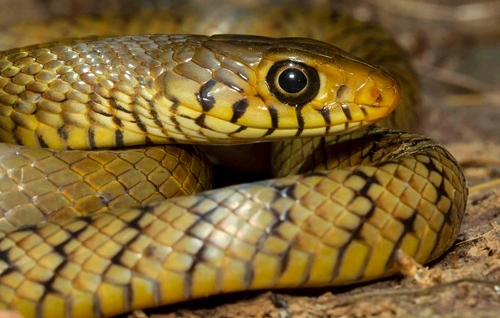
The Indian rat snake is one of the most commonly seen snake in villages and cities. It can grow upto 6 to 8 ft long. It is known for its fast movements. As the name suggests it eats rats and mice, making it a friend of farmers. Though it may look like a cobra froma distance, it is not poisonous at all. Sometimes it raises its head and hisses like the cobra when scared but it is mainly for its defense. It doesnot have any venom and is completely harmless.
4. Checkered Keelback
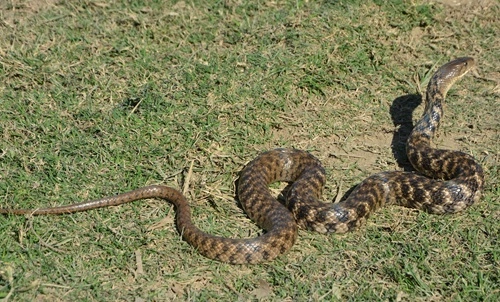
The Checkered Keelback is a water snake that is often seen near ponds, lakes, and rivers. It is green or brown in colour with checkered patterns in the body. This snake is non venomous and feeds mostly on frogs, fish and small aqautic creatures. It swims very well and spends a lot of time in or around water. Many people mistake it for a venomous snake mainly due to its appearance.
5. Green Vine Snake
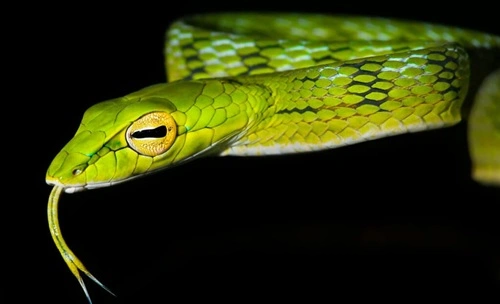
It is long, thin and bright greenin colour. It is commonly found in trees and bushes. This snakes blends well with leaves and is difficult to spot. It feeds on lizards, frogs, and small birds. Its sharp nose and bright colour make it look different from most snakes. Though it has very mild venom that helps it catch its prey it is not dangerous to human all.
6. Indian Wolf Snake
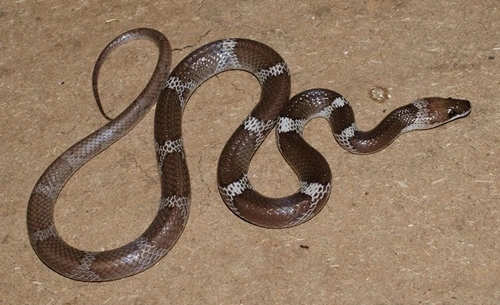
The Indian Wolf Snake looks a lot like the venomous krait, which often leads to confusion. However, it is non-venomous. It is mostly found at night and prefers to stay hidden under stones, leaves, or logs. It feeds on small reptiles and frogs. This snake is shy and tries to escape when disturbed. Because of its similar look to dangerous snakes, people sometimes kill it out of fear, which is unfortunate because it poses no real danger.
7. Common Trinket Snake
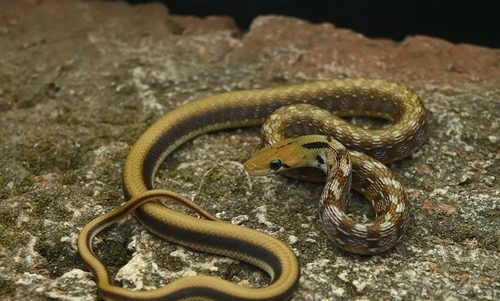
The Common Trinket Snake is a beautiful, shiny snake that is active during the dy. It is fast and often seen in forests and open lands. This snake feeds on rodents, birds, and lizards. it is not venomous but can be a little aggressive if caught or cornered. However, its bite is harmless and does not require any medical attention. It plays an important role in nature by keeping the number of pests under control.
8. Banded Racer
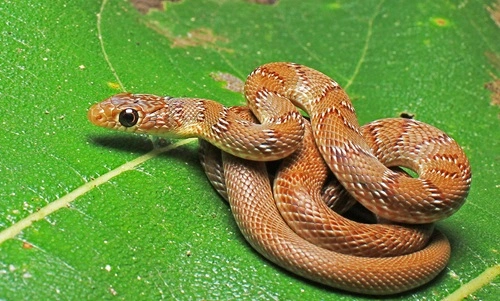
The Banded racer is a slender and quick-moving snake found in many parts of India. It is light brown with dark bands across its body. This snake is active in daytime and feeds on insects, rodents, and frogs. It prefers open fields and grasslands. It is not aggressive and usually avoids human contact. Even though it looks fast and active, it is completely non-poisonous and harmless.
9. Buff Striped Keelback
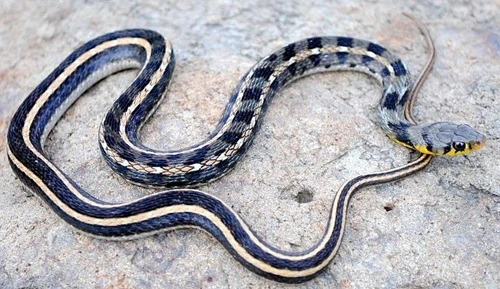
The Buffe Striped Keelback is a small and colourful snake often seen near water or in gardens. It has a yellow or buff-coloured stripe running along its body. It feeds mostly on frogs and insects. This snake is very common in rural areas and it not dangerous to humans at all. It rarely bites and even if it does, the bite is harmless. Many people in villages are used to seeing this sake and know that it is safe.
10. Bronze Back Tree Snake
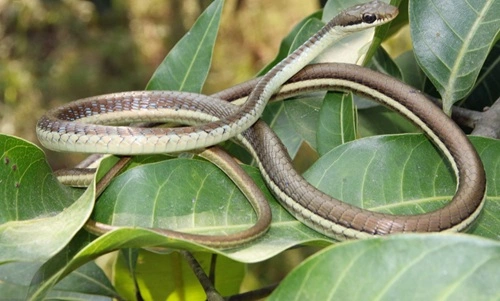
The Bronze Back Tree Snake is a tree-dwelling snake that lives mostly in forest and hilly areas. It is thin and has a shiny bronze back. It is an excellent climber and can move very fast through trees. This snake feeds on birds, eggs, lizards, and frogs. it is non-venomous and avoids humans. It may jump if disturbed, but it does not bites unless caught. Even then , its bite us not harmful.
Why Non-Poisonous Snakes Matters
Non-poisonous snakes are just an important as venomous one. They helps maintain balance in nature by controlling the numbers of pests like rats, frogs, and insects. They are also part of the food chain and serve as prey for birds, mongooses, and other animals. These snakes are not dangerous to humans and usually try to stay away from people. Many times, they are killed out of fear or misunderstanding. Learning to identify non-poisonous snakes can helps protect then and reduce unnecessary panic.
Final Words
Snakes are often feared and misunderstood creatures. But not all snakes are dangerous. In fact, most snakes found in Indian are non-poisonous. The play a vital role In our environment and help farmers by eating rats and other pests. The ten snakes listed above are harmless and commonly found in different parts of the country. By knowing more about them, we can reduce fear and live peacefully with these amazing reptiles. Next time you see a snake, don’t panic. Observe from a safe distance, and remember, it’s probably just another helpful, non-poisonous friend of nature.


